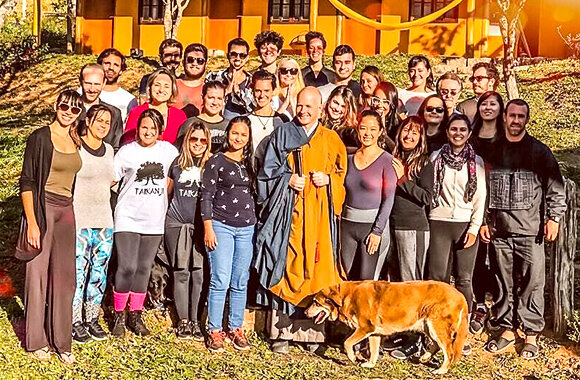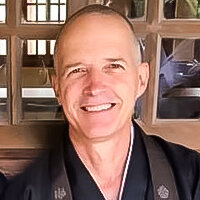Use of Cookies
Our website uses cookies to facilitate and improve your online experience.
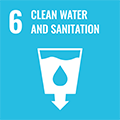
Rev. Enjo Stahel
I live in Temple called Taikanji where is in the mountains of Pedra Bela city, about a two-hour drive to the northeast from São Paulo where is the largest city in South America. Also, there is Casa Taikanji (“Casa” means home, gathering place in Portuguese) in the center of Bragança Paulista city where is a resort nearby, and the people living in the city come to Casa Taikanji to practice Zen meditation. Here I would like to introduce the activities related to the SDGs at Taikanji where I live.
First, about the water, which is one of our main themes. In Brazil, there are places where you can drink delicious water from nature, but in most places, people do not drink tap water that comes out by twisting the faucet. It is common to buy drinking water. On the other hand, it is true that some people difficult to purchase clean drinking water, and also some areas do not have sanitary toilets. It could be difficult to get safe water and toilets to everyone right now. However, we are building a sustainable circulating water system in the temple. When we think about future, we believe that such a system will contribute to improving water quality and installing sanitary toilets.
We made a pond to store rainwater along the slope in the land of Taikanji that increases the penetration rate into the soil to improve the availability of water during the dry season. We also installed the system that filter to clean, purify and store the water for the people who come to our temple. Inside the temple’s land, we do not use pesticides or fertilizers that could contaminate groundwater. Also, we installed a device that converts human excrement into biogas and fertilizer for toilet. In the present, we are building huge water tank to store 50,000 liters of clean water. As a result, all the water we used in temple were treated and circulated within own facility. We also use hydraulic power to pump the water that were consumed in our every facilities, and use solar energy to heat the water for living. We are currently using public services for electricity, but we plan to expand our solar system to generate electricity on temple’s land.
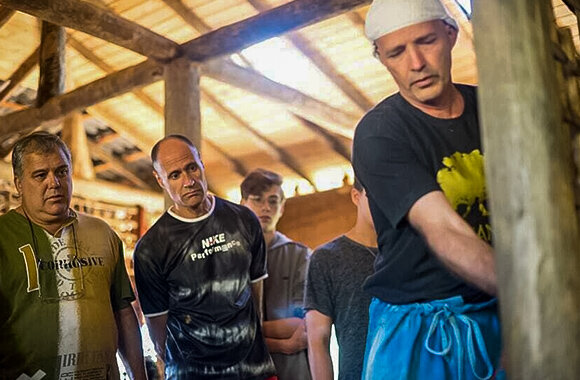
We are planting trees in devastated soil for organic farming to reduce soil erosion. During the last 30 years or more of the working on environment protection activities, many animals, birds, mammals, insects and plants have returned to the area, and we can observe that wildlife of all kinds have increased more than before.
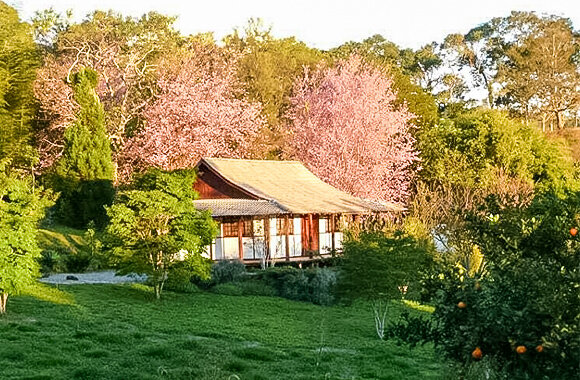
All recent activities we have been developing as environment friendly architecture, ecological agriculture and landscaping under the teachings of Buddha, have provided the temple with a wonderful environment for spreading a culture of peace and harmony. For example, when constructing the temple complex such as Hondo (the main hall), Zazendo (the meditation hall), Shuryo (the practitioners’ dormitory), Tenzo (the chef cook’s dormitory), we used as raw materials such as bamboos, eucalyptus and straws that grow naturally around the temple and the surrounding area, as well as stone and soil. We followed the method of Tsuchikabe (clay walls) and the method of Pau-a-pique (native’s method), creating a sustainable method with less impact on the environment. The construction work was carried out with the participation of local experts, Sangha members and volunteers.
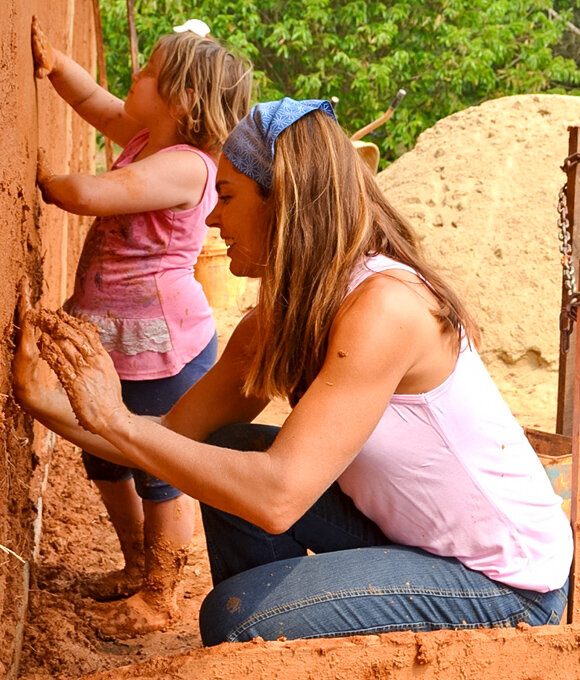
And through our regular Sesshin training, we teach that to correct posture and breathing in Zazen to the practitioners, it is the better ways to care for their mind and body. During the Sesshin, to harmonize the mind leads to a deeper awareness of one's body, breathing, habits, and so on, and this awareness is an important way to improve our lifestyle and lead to better mental health with the passage of the time.
The adjacent farms incorporate permaculture and organic farming, with orchards such as corn, root vegetables, citrus, bananas, avocados, lychees, persimmons and macadamia nuts, as well as a variety of vegetable and vegetable gardens. We also produce our own high quality organic coffee. When the number of participants in our Sesshin is large, we buy the food from local family-owned farmers and markets to increase local production and consumption, by this way reducing the use of packaging and pollutant emissions by transportation. Thus, we could pay close attention to the quality of the food and utilize the products cultivated in our farms to provide nutritious and well-balanced Zen vegetarian food, Shojin ryori.
Now, we need to urgently consideration of reducing the consumption of the resources and the energy, which means that we need to further action for the SDGs (Sustainable Development Goals). This is in the line of Zen teachings that advocating a simpler and more fulfilling life. What we practice at Taikanji is to learn to live at the bare minimum and reduce the burden on the earth’s natural resources. Thinking for the benefit of all, each of us is doing what we need for the place where we are living now.
Sustainably, through our life such as in harmony with the magnificent nature and the traditional Soto Zen training, we will continue to provide the new perspectives and colors of life to everyone, not only visitors in here, for all the beings.
